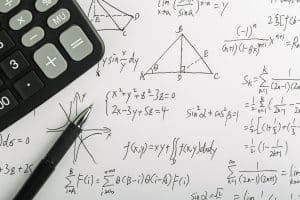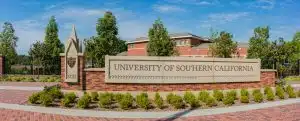The Ultimate Guide to Acing the AP Art History Exam
For high school students who are determined to make the most out of their four years at high school, learn the most, and fill their college applications with fantastic details for college admissions officers to fawn over, enrolling in numerous AP courses per year is one of the best ways to achieve all of those goals. One of the most exciting and eye-opening courses that students can take through the AP program is the AP Art History Exam.
AP, which stands for Advanced Placement, courses is a program offered in both the United States and Canada and is aimed at providing children the chance to take part in college-level curricula and exams at the high school level. Students who perform amongst the best in the country can earn college credits and placement at many schools nationwide.
This placement is ultimately decided by an end-of-course exam, which students all over the country will take to test the knowledge that they have gained as well as their ability to understand and explain related material at a critical and analytical level.
What is the AP Art History exam?
The AP Art History exam is a rigorous assessment designed to test your understanding of artworks, artistic movements, and cultural contexts throughout history. It is a college-level course and exam offered by the College Board as part of the Advanced Placement (AP) program. The exam evaluates students’ knowledge of global art history from prehistoric to contemporary times.
The AP Art History Exam is one of the rare classes that high school students take. In fact, in 2019, just under 25,000 high school students took the AP Art History Exam. More than 5 million students took AP exams last year. Just because it is rare, however, does not mean that it is not an incredibly worthwhile course for students to take, especially if they are interested in pursuing a college degree and a professional career in the arts, history, or the humanities.
Suppose you are amongst those students who plan on taking the AP Art History course and studying for the AP Art History Exam. In that case, we at AdmissionSight want to help you prepare by giving you a quick breakdown of everything you will face on the exam. On top of that, we will also go over the most effective way to study and prepare for this kind of exam.
What you will learn in the AP Art History course?
Overall, the AP Art History course allows high school students to dive deeply into the nature of art and artistic creation. Throughout the course, students will be encouraged to consider the uses, meanings, and production of art throughout the history of human civilization.
Beyond that, students will also be expected to learn and be able to explain the societal responses and impact that art has garnered and created throughout human history. In all, the class is aimed at immersing students into the wonderful world of an artistic tradition that spans across time, culture, and more. It is also aimed at fostering an immense and educated appreciation of art and the history of art.
Artistic analysis
One of the significant things that students can expect to gain out of taking the AP Art History Exam is the ability to learn visual, contextual, and comparative analysis that is applied to the many different forms of art. Beyond that, students will also gain a distinct understanding of some of the tremendous individual works. They will also learn about the evolution of processes and products that were used throughout history to help some of the man’s greatest artists create some of the man’s most significant works of art.
While there is no official prerequisite for the AP Art History Exam, students are most likely to excel and love this course if they have shown a distinct interest in and passion for courses such as literature, studio art classes, history, and other similar focuses.
One important thing to keep in mind
Before we at AdmissionSight start breaking down the many exciting ins and outs of the AP Art History Exam itself, there is one thing that we should go over with the class and the exam.
The course was dramatically overhauled during the 2015-16 school year and is now presented and taught specifically with the AP Art History Exam in mind. That is not to say that most of the information itself is not the same; it certainly is! However, the course now has a more direct objective of teaching students to prepare for the exam. This means that the scope of the course overall has been changed to focus on teaching students how to understand art from a more conceptual standpoint, as well as encouraging deep critical thinking regarding art and analytical skills.
With the emphasis being put on these skills that certainly go far beyond just helping in the study of art history, less emphasis has subsequently been put on memorizing knowledge and facts regarding specific works of art. That said, the course itself will still require students to gain familiarity with specific works of art. Still, the number of particular works has been downsized from approximately 500 pieces to just about half of that since the redesign back in 2015-16.
What is on the AP Art History exam?
Typically, the course itself is broken down into ten unique units. Here at AdmissionSight, we think preparation is one of the best ways to increase the chances of success. With that in mind, we have made it a priority to allow you to take a look at the ten units below:
| Unit | Exam Weighting (Multiple-Choice Section) |
| Unit 1: Global Prehistory, 30,000–500 BCE | ~4% |
| Unit 2: Ancient Mediterranean, 3500 BCE–300 CE | ~15% |
| Unit 3: Early Europe and Colonial Americas, 200–1750 CE | ~21% |
| Unit 4: Later Europe and Americas, 1750–1980 CE | ~21% |
| Unit 5: Indigenous Americas, 1000 BCE–1980 CE | ~6% |
| Unit 6: Africa, 1100–1980 CE | ~6% |
| Unit 7: West and Central Asia, 500 BCE–1980 CE | ~4% |
| Unit 8: South, East, and Southeast Asia, 300 BCE–1980 CE | ~8% |
| Unit 9: The Pacific, 700-1980 C.E. | ~4% |
| Unit 10: Global Contemporary, 1980 C.E. to Present | ~11% |
Throughout the exploration of these topics, you will also be encouraged to think conceptually about the content of the course by using the three big ideas. These are the overarching concepts of the course itself and are specifically inclined to try to help a student learn how to think critically and analyze and appreciate art regardless of when or where the art was from. The three big ideas are below:
- Artists manipulate materials and ideas to create an aesthetic object or event. Essential question: What is art, and how is it made?
- Art-making is shaped by tradition and change. Essential question: Why and how does art change?
- Interpretations of art are variable. Essential question: How do we describe our thinking about art?
Throughout studying the course material through these three big ideas related to the system, students are expected to develop foundational knowledge and thinking skills for understanding art and art critique. There are eight different art history skills that students will be asked to create in the course itself. Below is a breakdown of how much each skill will be tested on the AP Art History Exam:
| Skill | Description | Exam weighting |
| Visual Analysis | Analyze visual elements of works of art. | 15%-19% |
| Contextual | Analyze contextual elements of a work of art, and connect contextual and visual elements of a work of art. | 28%–32% |
| Comparison of Works of Art | Compare two or more works of art. | 11%–13% |
| Artistic Traditions | Analyze the relationships between a work of art and a related artistic tradition, style, and/or practice. | 20%–25% |
| Visual Analysis of Unknown Works | Analyze visual elements of a work of art beyond the image set. | 6%–8% |
| Attribution of Unknown Works | Attribute works of art. | 6%–8% |
| Art Historical Interpretations | Analyze art historical interpretations. | 6%–8% |
| Argumentation | Develop and support art historical arguments. | Not assessed in the multiple-choice section |
The Fundamentals of the AP Art History Exam
Before you sign up for the AP Art History course, it is essential to know a lot of fundamental facts about the AP Art History Exam itself. First off, it is essential to understand that the exam itself is one of the longest exams within the AP curriculum. In total, it clocks in at three hours and – much like most of the other available AP courses – is broken into two halves: a multiple-choice section of questions and a free-response section.
Let’s break down the chances of students scoring a perfect 5 out of 5 on the AP Art History Exam. When it comes to scores of AP exams, students must score a 3 out of 5 to pass the exam. When gaining credit and placement from colleges, students will typically have to score at least a 4, and sometimes only a 5 will do. Beyond that, it is essential to keep in mind that the credit amount that placement students receive is based on the college or university that they are interested in attending.
Back to the AP Art History Exam, last year, just over 10 percent of students who took the exam scored a perfect 5 out of 5. Here is a breakdown of what percentage of students earned what score. While it may be difficult, scoring a 5 out of 5 on any AP exam will increase your chances of getting into the school of your dreams.

Multiple choice
The very first section of the exam is the multiple-choice section and will take up the first hour of the exam. Within that hour, a student will be tasked to answer 80 total questions, which account for exactly half of the total score of the exam.
Of the 80 total questions, there are about 40 of them that will be based on an image of a work of art. The remaining questions will be grouped into eight separate sets made up of three to six questions, each of which is based on a different color image. Once students complete the first portion of the exam, they will move on to the section of the exam, the free-response questions.
Free response
The second section of the AP Art History Exam is the free-response section and takes up the remaining two hours of the exam. Overall, this section includes six total questions and will make up the remaining half of the exam’s total score.
First, students will tackle two essays and get 30 minutes each to answer each question. From there, students will then be expected to answer four remaining questions and will get 15 minutes to answer each of the four questions.
For the 30-minute questions, students will be provided with three to five different works of art that share some unifying concept or idea. Students may also be expected to call upon an artwork they either covered in the course or learned about outside the course.
- The first 30-minute free response question will ask students to focus on art comparison. Here, students will have to compare specific artwork from the course while focusing on the similarities and differences between the works.
- The second 30-minute free response question will test the student on their visual and contextual analysis. Here, students will be chosen to analyze the contextual and visual features of a work of war directly from AP Art History and use evidence to defend and argue their theory.
- The third question (the first 15-minute question) will test a student’s ability to analyze a work of art from a visual standpoint. It will require students to examine elements of a work of art and use them to deduce things such as tradition, practice, era, style, and more.
- The fourth short answer question will test a student’s ability to analyze a work of art from a contextual standpoint. Here, students will evaluate the contextual elements from a specific image of a work of art and use it to explain how the context of the art can influence an artist’s decision.
- The fifth question will ask students to attribute a work of art to a specific artist and justify their attribution based on visual evidence they break down.
- Finally, the sixth question will ask students to focus on continuity and change within art. Here, students will have to identify relationships, such as tradition, style, practice, and more, between different works of art.
Sample questions from previous exams
Here are some sample questions from previous exams that might be helpful:
The above questions require students to choose a work of art that represents cultural or national identity and compare it to another relevant work. They must identify one similarity and one difference in how both works convey cultural or national identity and describe specific visual characteristics of both works to support their explanation.
Additionally, students must explain one similarity in how both works express the values of the society in which they were created, supported by relevant iconographic or contextual information from both works. This question aims to evaluate students’ ability to analyze and compare artworks in terms of cultural and national identity, visual characteristics, and societal values, demonstrating their understanding of art history and its cultural contexts.
How to study for the AP Art History exam
As you begin preparing for the AP Art History Exam, there are some great preparation styles and tools to remember throughout the process. To make sure that you get the very most out of your studying, we at AdmissionSight have broken down the very best way to study and prepare.
Analyze your knowledge and skill
The first step to preparing for the AP Art History Exam effectively is to analyze the knowledge and skills that you have already gained from the course itself. The best way to do this is to take a practice exam that you will either be able to find online or through one of the many great study guides that you can purchase in paperback. While it is helpful to time yourself when you take this practice exam to familiarize yourself with the speed at which you will be expected to take this course, it is unnecessary.
There are several tests and practices that you can either purchase or utilize without charge.
The most important thing to remember here is that you should cross-reference the answers that you came up with along with the answers that are provided in whatever resource you are using to study. From there, you can effectively manage your strengths and weaknesses to know what to do in the next step.
Study the material
Of course, what you will want to do next is take what you have learned about your mastery of the material and apply it to how you break up your studying the rest of the way. Make sure to focus on areas of weakness so that you may strengthen your overall knowledge while making sure not to forget to study and test yourself on your areas of strength.
The goal here is to not only familiarize yourself with the specific pieces of art that you will be expected to know for the exam but also gain a great understanding of the Big Ideas and overarching concepts of the course itself. This will give you the very best chance at success and scoring that coveted 5 out of 5.
Practice both sections of the exam
The next step is to return to sample questions and start quizzing yourself on both the multiple-choice and free-response style questions.
This will not only help you familiarize yourself with the facts and questions that you may face on the exam itself, but it will also help you gain total comfort with all the different kinds of questions and formats that they may come in. Here at AdmissionSight, we believe the goal for an AP exam is to test yourself not only on the content but also on the format of the exam. Going through practice sessions of multiple-choice and free-response questions is a great way to do just that.
Take more practice tests
When preparing your mind for the rigors of taking an AP exam, especially one as long as the AP Art History Exam, the best way is to take as many practice tests as possible.
Ideally, you will be able to take many complete practice exams before the date of the actual exam approaches. One thing to keep in mind is that you will want to give yourself the amount of time that is allotted during the actual exam. That means one hour for the multiple-choice section and two hours for the free-response section.
That way, you will be guaranteed that your body and mind are prepared to answer all those fascinating questions and deal with all those great topics when the exam finally arrives.
Form study groups
Collaborate with your peers and discuss different artworks, concepts, and historical periods. Sharing perspectives and knowledge can deepen your understanding of art history. Consider organizing study sessions where each group member presents a specific artwork or topic, leading a discussion and encouraging critical thinking. This collaborative approach can help you gain new insights and perspectives, as well as reinforce your understanding of the material.
Seek teacher guidance
Consult your art history teacher or instructor for advice and clarification on challenging topics. They can provide valuable insights and resources to enhance your understanding of art history. Take advantage of their expertise and ask questions to deepen your knowledge. Additionally, consider forming study groups with classmates and meeting with your teacher to discuss specific artworks or concepts. This personalized guidance can significantly contribute to your preparation for the AP Art History exam.
How hard is the AP Art History exam?
The difficulty of the AP Art History exam can vary depending on your level of interest, prior knowledge, and study habits. Some students find the exam challenging due to its expansive content and the need to analyze and interpret artworks within their broader historical and cultural contexts.
Studying for the AP Art History exam requires a deep dive into the art world, spanning various periods and cultures. From ancient Egyptian sculptures to Renaissance masterpieces and from African tribal art to contemporary installations, the exam covers a wide range of artistic styles and movements. This breadth of content can be overwhelming for some students, as it requires them to become familiar with a vast array of artworks and their historical significance.
Furthermore, the exam demands a high level of critical thinking and analytical skills. It is not enough to memorize names and dates; you must be able to analyze artworks and understand their cultural and historical contexts. This involves interpreting the meaning behind the painting, identifying the techniques used by the artist, and recognizing the influences and connections between different art movements.
However, with dedicated study and practice, it is possible to succeed in the AP Art History exam. The key is to develop strong visual analysis skills and a solid understanding of art historical concepts. Effective study strategies, such as creating study guides flashcards, and practicing timed essays, can help you overcome any difficulties you may encounter.
Immerse yourself in the art world by visiting museums, galleries, and exhibitions. Engage in discussions with art enthusiasts and experts to gain different perspectives and insights. By actively engaging with art, you will deepen your understanding and appreciation for the subject, making it easier to tackle the exam.
Additionally, take advantage of online resources and textbooks designed explicitly for AP Art History. These resources often provide detailed explanations of critical artworks, historical contexts, and influential art movements. Supplement your learning with online quizzes and practice exams to test your knowledge and identify areas that require further study.
Remember, your innate artistic talent does not solely determine success in the AP Art History exam. It tests your ability to analyze, interpret, and connect artworks to their historical and cultural contexts. With consistent effort, a passion for art, and a well-rounded study plan, you can conquer the challenges posed by the exam and achieve a high score.
When is the AP Art History exam in 2024?
In 2024, the AP Art History exam is scheduled for May 6th. It is crucial to know the exam date well in advance and plan your study schedule accordingly. Mark your calendar and ensure you have ample time to review the content, practice exam questions, and feel confident leading up to the exam.
The AP Art History exam is an important milestone for students interested in art history. This exam allows students to showcase their knowledge and understanding of various art movements, styles, and historical contexts. It is a comprehensive assessment that tests not only factual knowledge but also critical thinking skills and the ability to analyze and interpret works of art.
Remember, the AP Art History exam is not just about memorizing facts and dates. It is about developing a deep appreciation and understanding of art and its role in human history. By immersing yourself in the subject matter, actively engaging with the artworks, and honing your analytical skills, you will be well-prepared to excel on the AP Art History exam in 2024.
Here is the complete schedule for 2024’s AP examinations:
| Week 1 | Morning 8 a.m.
Local Time |
Afternoon 12 p.m.
Local Time |
| Monday,
May 6, 2024 |
United States Government and Politics | Art History
Chemistry |
| Tuesday,
May 7, 2024 |
Human Geography
Microeconomics |
Seminar
Statistics |
| Wednesday,
May 8, 2024 |
English Literature and Composition | Comparative Government and Politics
Computer Science A |
| Thursday,
May 9, 2024 |
Chinese Language and Culture
Environmental Science |
Psychology |
| Friday,
May 10, 2024 |
European History
United States History |
Macroeconomics
Spanish Literature and Culture |
| Art and Design: Friday, May 10, 2024 (8 p.m. ET), is the deadline for AP Art and Design students to submit their three portfolio components as final in the AP Digital Portfolio. | ||
| Week 2 | Morning 8 a.m.
Local Time |
Afternoon 12 p.m.
Local Time |
Afternoon 2 p.m.
Local Time |
| Monday,
May 13, 2024 |
Calculus AB
Calculus BC |
Italian Language and Culture
Precalculus |
|
| Tuesday,
May 14, 2024 |
English Language and Composition | African American Studies
Physics C: Mechanics |
Physics C: Electricity and Magnetism |
| Wednesday,
May 15, 2024 |
French Language and Culture
World History: Modern |
Computer Science Principles
Music Theory |
|
| Thursday,
May 16, 2024 |
Spanish Language and Culture | Biology
Japanese Language and Culture |
|
| Friday,
May 17, 2024 |
German Language and Culture
Physics 1: Algebra-Based |
Latin
Physics 2: Algebra-Based |
How long is the AP Art History exam?
The AP Art History exam lasts approximately three hours and is divided into two sections. The multiple-choice section accounts for about 50% of the total score and consists of 80 questions to be completed in one hour. The free-response area contributes to the remaining 50% of the score and requires you to respond to two questions over two hours.
When taking the AP Art History exam, time management is crucial. With three hours, it is essential to allocate your time wisely to ensure you have enough time to answer all the questions. The multiple-choice section, which makes up 50% of your score, should be completed within one hour. This means that you have approximately 45 seconds to answer each question. It is advisable to read the questions carefully and eliminate any incorrect answers to maximize your chances of selecting the correct option.
After completing the multiple-choice section, you will move on to the free-response area, contributing to the remaining 50% of your score. This section requires you to respond to two questions for two hours. It is essential to read each question and plan your response accordingly carefully. Take your time to analyze the prompt, gather your thoughts, and organize your ideas before beginning to write. Remember, the quality of your response is more important than the quantity, so focus on providing well-developed and insightful answers.
Preparing for the AP Art History exam involves not only studying the content but also practicing timed exams to build your time management skills. Set specific time limits for each section and practice completing the questions within those time constraints. This will help you become familiar with the pace at which you need to work and ensure that you can effectively manage your time during the actual exam.
In addition to time management, it is also beneficial to familiarize yourself with the format and structure of the exam. Understanding how the questions are presented and what is expected in your responses can help you feel more confident and prepared on exam day. Take advantage of any available practice materials, such as sample questions or previous exams, to understand the types of questions you may encounter and the level of detail required in your answers.
Remember, the AP Art History exam is not just a test of your knowledge of art history but also your ability to effectively communicate your understanding. By practicing time management, familiarizing yourself with the exam format, and honing your analytical and writing skills, you can approach the exam with confidence and maximize your chances of success.
When do AP scores come out?
AP scores for the Art History exam are typically released in early July. You will receive an email notification when your scores are available. Additionally, you can access your scores online through the College Board’s AP scores website. Remember that specific score release dates may vary slightly each year, so it is always a good idea to check the College Board’s official website for the most accurate information.
By following this ultimate guide and implementing effective study strategies, you will be well-equipped to ace the AP Art History exam. Remember, success in art history requires not only knowledge but also a passion for the subject. Embrace the beauty of art, immerse yourself in its history, and enjoy exploring the art world through the AP Art History exam.
If you want to discuss the matter to a greater extent or inquire about college admissions, look no further! Our experts here at AdmissionSight can help you! Here at AdmissionSight, we have over a decade’s worth of experience guiding students through the competitive admissions process to get accepted to the top universities in the world. Feel free to set up an appointment today to book your initial consultation.















































